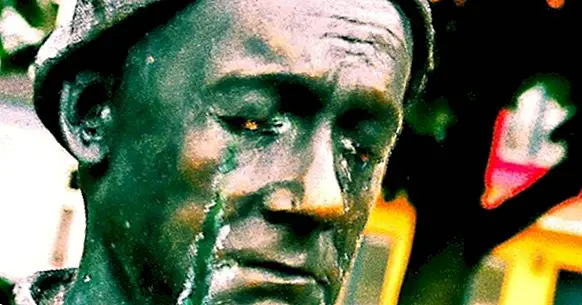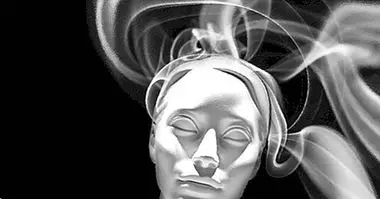Learned helplessness: delving into the psychology of the victim
The Learned helplessness it is perhaps one of those psychological phenomena whose importance affects the existential plane of the human being, and whose research and answers that science throws about it must be capable of improving the way in which we relate to each other. Minimizing learned helplessness will be an advance both for society and for individuals in particular.
But, What exactly is learned helplessness, and why is knowing this concept so important? In today's article we will explore this phenomenon and its implications in our day to day.
Learned helplessness: a syndrome to consider
Learned helplessness is something that can affect people as close as a relative and even oneself can be. It is not, therefore, just an academic concept without relevance in reality, but something that affects the daily life of many people and, in many occasions, their lives may depend on the effective help of a relative or health professional mental that tries to mitigate this learned and dysfunctional behavior.
What is learned helplessness?
But What exactly is learned helplessness?
Broadly speaking, refers to the condition by which a person or animal is inhibited in aversive or painful situations when the actions to avoid it have not been fruitful, ending by developing passivity in this type of situations. Understanding the way in which this phenomenon develops is vital to understand and help people who suffer from this psychological bias, since it can be a limiting belief that acts as a strong burden for their personal development and self-esteem.
The contributions of Martin Seligman, the researcher who discovered learned helplessness
Seligman Y Overmaier They were among the first researchers who raised the question about why an animal or a person who suffered in their own flesh constant adverse and painful conditions did nothing to abandon that situation. This finding was reported in investigations with dogs, and were subsequently followed by some researchers as Watson Y Ramey , who studied the learned helplessness in human beings.
On the other hand, there is no specific situation that generates helplessness , that is, many people can experience the same adverse situation (even in a group) and yet react differently to it. It was Bernard Weiner who considered the influence of the interpretation and the perception that each individual has of the event in the development of the defenselessness and also in the way of facing it.

Signs of learned helplessness
When someone falls into defenselessness, he manifests it in three deficits: the motivational, the emotional and the cognitive. A person who begins to fall into defenselessness or who already suffers from it begins to show a delay in the initiation of voluntary response until it gradually ceases to exist (motivational deficit). In the same way, a series of behavioral disorders , being the most common state of anxiety and depression (emotional deficit), which are making a dent to the point that the affected is unable to see solutions to the problem that torments him (cognitive deficit).
The answer to the question of why does not a person do anything in a situation clearly out of it It lies precisely in the integral impact not only of these three areas (motivational, emotional and cognitive) but also at the physiological level. In a word, his whole person, the different psychic and somatic areas, join in this syndrome. Consequently, it is not enough to make the decision to break with the negative cycle, but rather to unlearn the way in which the aversive or painful situation is processed.
Why do some people develop learned helplessness?
How do you get helpless? An easy way to understand it is the story of the frogs. It is said that to cook a live frog it is necessary to put it in the cold water and gradually increase the heat until it boils. However, if to cook the same frog we decided to throw it into the boiling water, the frog will jump; will escape from boiling water. With this example I want to explain that the learned helplessness is a thought scheme that develops gradually and that gradually eats the psychic and corporal strengths to the point of bending the will.
The sad thing to consider is the ease with which one can develop learned helplessness. We are all vulnerable to adopt this type of thinking schemes, because there is rarely an emotional education to be able to face it.
It is enough to continually expose the possible victim to adverse circumstances, lower his morale, overburden him with work, close his external support for a long time and repeatedly. The person who has been treated in this way will soon manifest deficits in the aforementioned areas: affective, emotional, cognitive and even somatic. And no, it is not something that does not happen every day: family violence and / or intimate partner violence are common examples in which they usually perceive different degrees of helplessness learned by the victim.
- Related article: "Learned helplessness in the victims of mistreatment"
But these are not the only scenarios in which relational patterns can be generated that can lead to learned helplessness. L There are at school, at work, in groups of friends ... The communicative and relational styles that generate learned helplessness do not necessarily translate into physical violence. In many cases, violence can be psychological, economic, moral, among others.
Solve learned helplessness
Regarding the need to generate dynamics to try to help a person with learned helplessness, we can say several things. Of little help if someone tries to help by constantly repeating to the victim what he should do or how he should think. It would be like wanting to tell a flu patient not to feel bad: Both the influenza virus and the mental patterns that lead to learned helplessness are sufficiently rooted in the person as to resist a few well-intentioned words or a summary advice on how to cope with the situation.
In effect, the person who suffers learned helplessness does not feel bad because he wants to but because his psyche has consolidated dysfunctional schemes that inhibit him when changing his own situation. Therefore, it is necessary to destigmatize the victim. Understand that you have lost the ability to see the solutions that others without the problem can see and that the help you need is not just that others tell you what you "should" or "should not" do, but reaffirm your ability and your self-esteem; to give back control to his life so that he is able to take control of what he saw at the time without solution .
Psychological therapy to treat these cases
In this regard, there are mental health professionals who can treat the cases of people with learned helplessness. One of the therapies most frequently used for this purpose is cognitive-behavioral therapy. Through several sessions, the psychologist will help the patient to restructure his thoughts and emotions , as well as the learned behaviors that prevent him from moving forward.
To end, helplessness is not a purely individual matter . It can be made "viral", if I may express it. That is to say, that helplessness can be transmitted to an entire society or a social group. The Second World War was an extreme case where all the cruelty that the human being is capable of was revealed, and the Nazi concentration camps witnessed thousands of human beings who, having lost all hope of survival, practically surrendered to the death.
In any case, it is not necessary to go so far in time or space. Family violence, bullying, mobbing they are just some everyday examples that show us that this phenomenon is well present in our societies. It is up to us to begin to become aware of this and to fight not only to minimize its effects, but also to fight its causes.
Bibliographic references:
- //www4.ujaen.es/~rmartos/IA.PDF
- //mariangelesalvarez.com/igualdad/relacion-de-control-o-igual/la-indefension-aprendendida



















